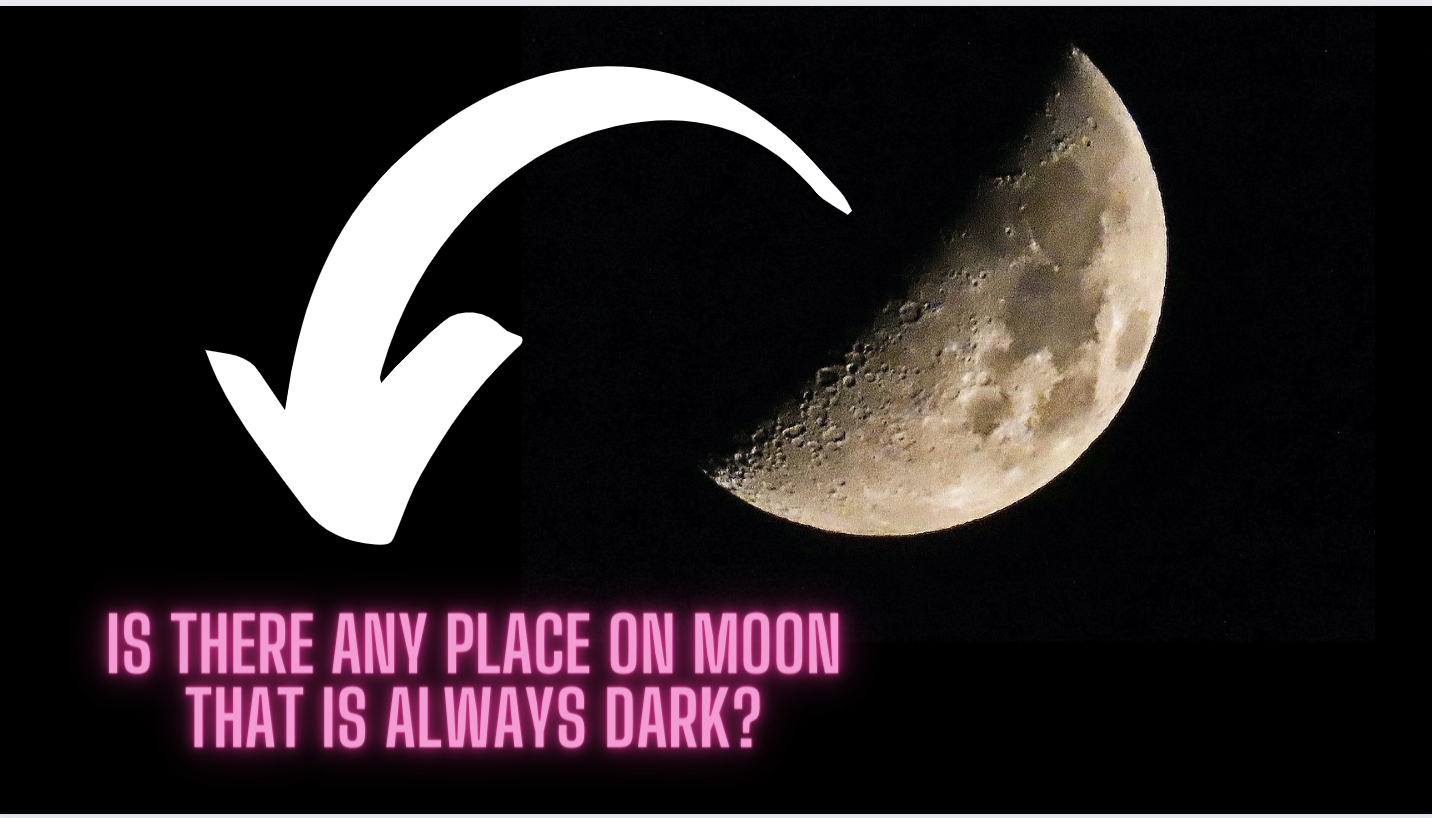The moon is the sole natural satellite of Earth, and for generations, humans have been mesmerized by its mysterious allure and breathtaking beauty. Even though it is plainly visible in the night sky, there are still a great many aspects about the moon that we do not understand. When people think about the moon, one of the questions that frequently crosses their minds is “Is there any part of the moon that is always dark?” This is a great question, and the answer is that there is, in fact, a region on the moon that is never exposed to sunlight; this region is known as the lunar south pole.
On the moon, there is an area known as the lunar south pole that is contained among the enormous craters that cast a constant shadow. These craters are so profound that the sun’s rays are unable to penetrate all the way to their bottoms, hence they are never lit up. Due to the fact that it takes the moon the same amount of time to revolve on its axis as it does to orbit the Earth, the same side of the moon always appears to be facing our planet. Because of this, the lunar south pole never points toward Earth, therefore it is never exposed to sunlight. As a result, the lunar south pole never freezes over.
The little amount of sunlight that penetrates the lunar south pole has a considerable effect on the average temperature of that area. The temperature in the portions of the moon that are illuminated by sunlight can rise to as high as 260 degrees Fahrenheit (127 degrees Celsius) during the day, but it can fall to as low as -280 degrees Fahrenheit (-173 degrees Celsius) at night. On the other hand, the temperature may never rise above -240 degrees Celsius (-400 degrees Fahrenheit) in those craters of the lunar south pole that are always in shade.
Scientists are very interested in the continuously shadowed craters of the lunar south pole because it is believed that these craters contain deposits of water ice. The presence of water on the moon could prove to be extremely useful for future human expeditions to the moon and possibly much further afield. Water is an essential resource for space exploration. However, due to the extremely low temperatures and the absence of sunlight, exploring the lunar south pole presents a number of difficulties. To this day, a human being has never set foot on the south pole of the moon.
In conclusion, the lunar south pole is an area on the moon that is never exposed to sunlight because of its location within the moon’s surface and the presence of numerous deep craters that cast permanent shadows. This area receives very little sunlight, which has a considerable bearing on the temperature, which never rises over -400 degrees Fahrenheit regardless of the time of year. The lunar south pole is of significant interest to scientists due to the possibility that it contains water ice. This is the case despite the difficulties presented by the harsh environmental conditions. We may one day be able to harness the resources of the lunar south pole to advance our exploration of space if we continue our research and exploration efforts to uncover the mysteries that lie there.
![]()
